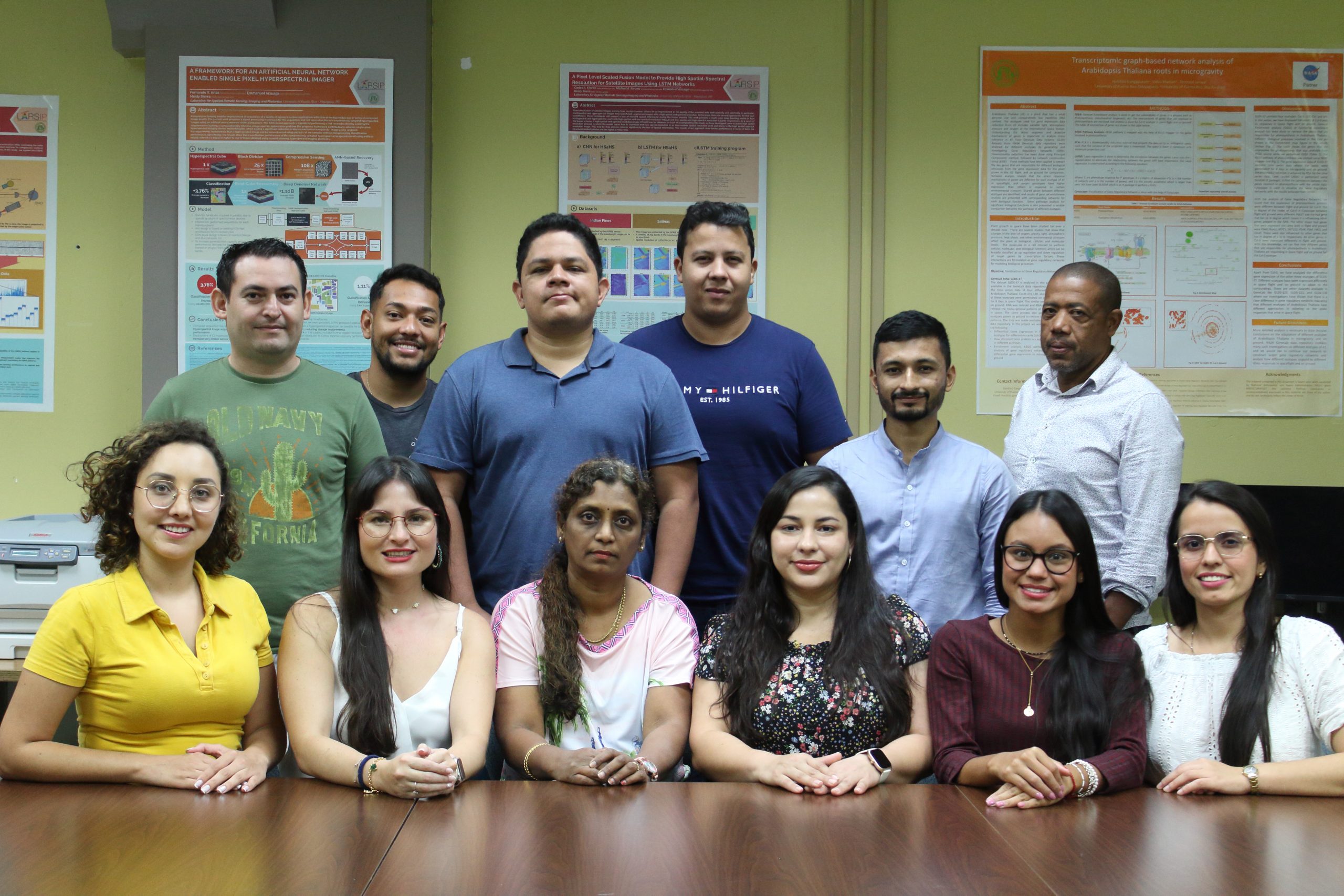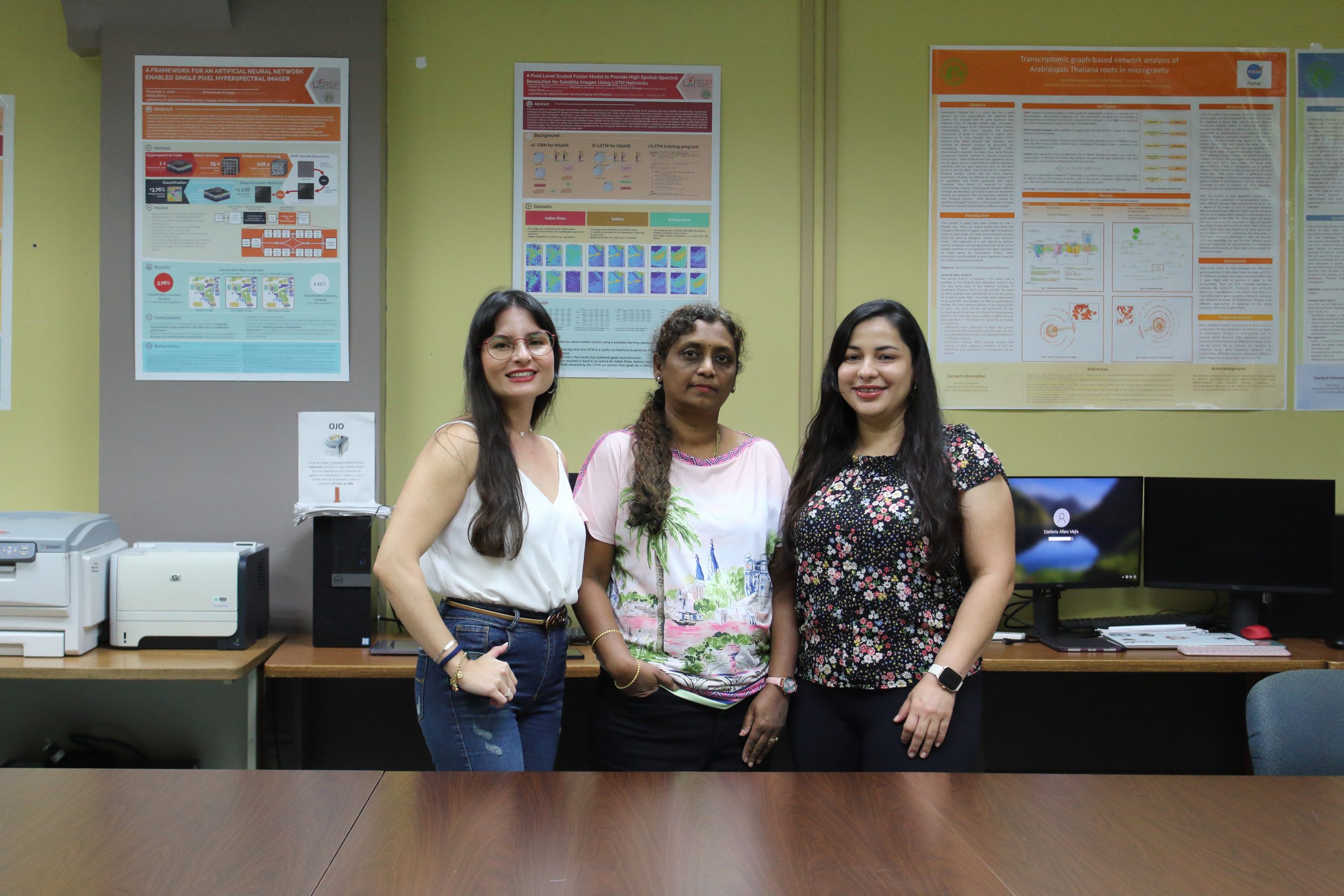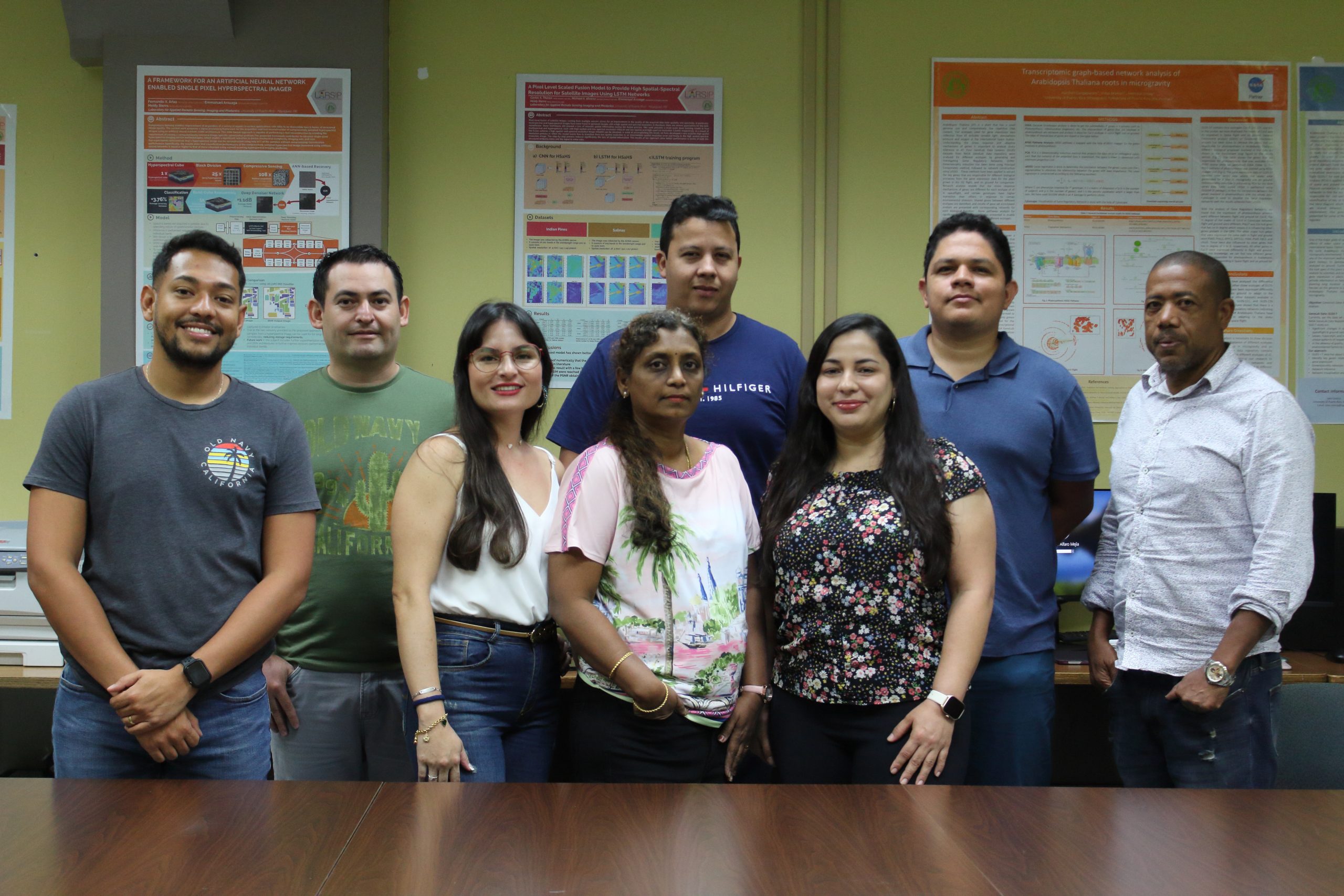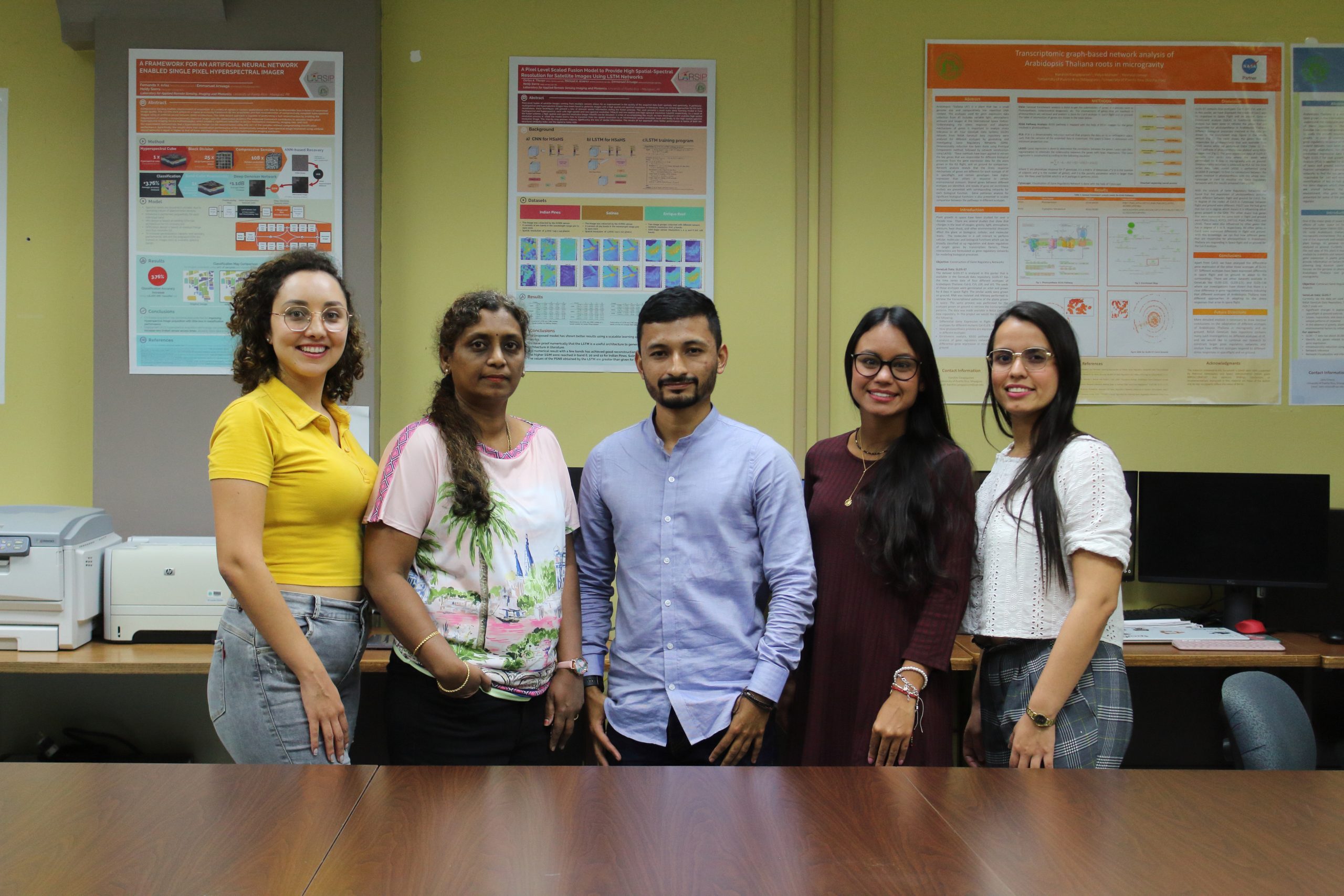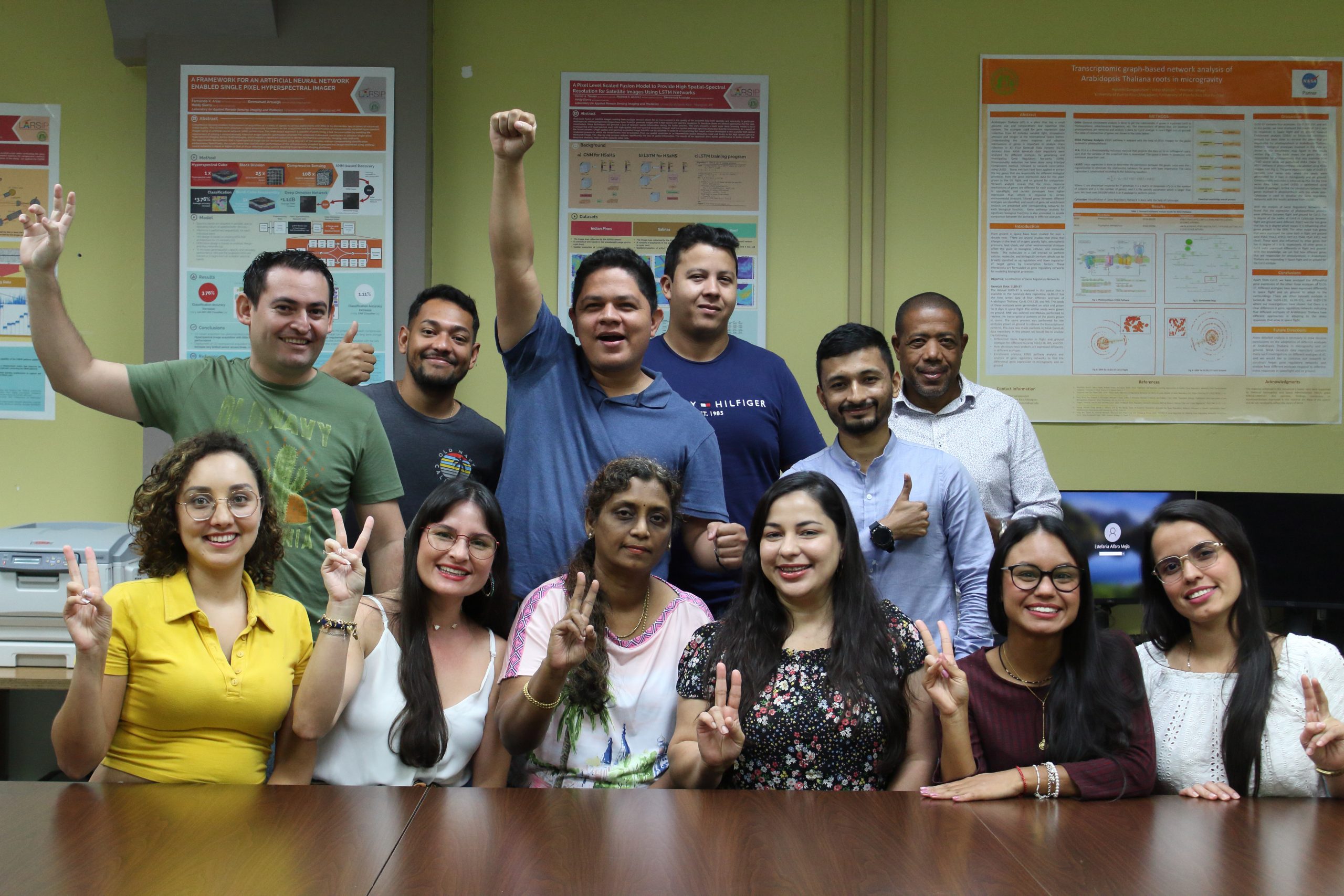The AIIG researchers develop machine learning and deep learning methods for multidimensional signal and image processing. Members of the group are working on multidimensional data representation using graphs, and graph embeddings for improving the performance of convolutional neural networks, and autoencoders in image classification and hyperspectral unmixing. They are also developing algorithms integrating spatial and spectral features for the dimensionality reduction of multidimensional datasets. The objective is to be able to perform dimensionality reduction, and data fusion to improve the spatial resolution of the image, at the same time obtain embeddings that represent data in a sparse domain for deep learning neural network architectures to reduce computational time. They also work with the optimization of the architecture by improving the learning protocols. Some of the learning methods explored are supervised semi-supervised, few-shot, one-shot, and no-shot learning. They have used the model agnostic meta-learning method, which is a way of optimizing a deep neural network using another network employing the paradigm of ‘learning to learn’ which has improved the accuracy of epilepsy prediction multiple folds. The AIIG contributes computationally efficient algorithms and applications of ML/AI in several fields such as sustainable and renewable energy, remote sensing, climate change, and smart health systems development.


